#syrian poems
Quote
I am a trembling in your throats; your words are smeared with my blood.
Adonis, from 'Psalm', Selected Poems (trans. Khaled Mattawa)
#q#lit#quotes#poetry#adonis#selected poems of adonis#forever favourite#and like the prophets i burn and burn#syrian lit#reading#m#x
1K notes
·
View notes
Text
The Diary of Beirut Under Siege // Adonis (Ali Ahmad Said)
[1]
My era tells me bluntly:
You do not belong.
I answer bluntly:
I do not belong,
I try to understand you.
Now I am a shadow
Lost in the forest
Of a skull
[2]
I'm on my feet, the wall is a fence —
The distance shrinks, a window recedes.
Daylight is a thread
Snipped by my lungs to stitch the evening.
[3]
All I said about my life and death
Recurs in the silence
Of the stone under my head …
[4]
Am I full of contradictions? That is correct.
Now I am a plant. Yesterday, when I was between fire
and water
I was a harvest.
Now I am a rose and live coal,
Now I am the sun and the shadow
I am not a god.
Am I full of contradictions? That is correct …
[5]
The moon always wears
A stone helmet
To fight its own shadows.
[6]
The door of my house is closed.
Darkness is a blanket:
A pale moon comes with
A handful of light
My words fall
To convey my gratitude.
[7]
The killing has changed the city's shape — This rock
is bone
This smoke people breathing.
[8]
We no longer meet,
Rejection and exile keep us apart.
The promises are dead, space is dead,
Death alone has become our meeting point.
[9]
He shuts the door
Not to trap his joy
… But to free his grief.
[10]
A newscast
About a woman in love
Being killed,
About a boy being kidnapped
And a policeman growing into a wall.
[11]
Whatever comes it will be old
So take with you anything other than this madness — get ready
To stay a stranger …
[12]
They found people in sacks:
One without a head
One without a tongue or hands
One squashed
The rest without names.
Have you gone mad? Please.
Do not write about these things.
[13]
You will see
Say his name
Say I painted his face
Stretch your hand to him
Or walk like any man
Or smile
Or say I was once sad
You will see
There is no homeland …
[14]
There may come a time when you'll be
Accepted to live deaf and dumb, and perhaps
They'll let you mumble: death,
Life, resurrection —
And peace be upon you.
[15]
He wears Jihad uniform, struts in a mantle of ideas.
A merchant — he does not sell clothes, he sells people.
[16]
They took him to a ditch and burnt him.
He was not a murderer, he was a boy.
He was not …
He was a voice
Vibrating, scaling the steps of space.
And now he's fluting in the air.
[17]
Darkness.
The earth's trees have become tears on heaven's cheeks.
An eclipse in this place.
Death snapped the city's branch and the friends departed.
[18]
You do not die because you are created or because you have a body
You die because you are the face of the future.
[19]
The flower that tempted the wind to carry its perfume
Died yesterday.
[20]
The sun no longer rises
It covers its feet with straw
And slips away …
(translated from the Arabic by Abdullah al-Udhari)
#poetry#Adonis#Syrian poetry#Lebanese poetry#Abdullah al-Udhari#Beirut#siege#war#Lebanon#1982#poems of protest#Arabic poetry
11 notes
·
View notes
Quote
أنا الدمشقيُّ لو شرّحتمُ جسدي...لسـالَ منهُ عناقيـدٌ وتفـّاحُ
I am the Damascene, if you cut my body open...It shall spill grapes and apples
نزار قباني, القصيدة الدمشقية
Nizar Qabbani, Damascene Poem
168 notes
·
View notes
Text
I have told you. About the girl who sings at the window. And the gravel that breaks under the wheels of the train. About the cemetery that has been sleeping happily for centuries, I have told you. A flower from my body, every morning—And a flower from my body, every evening—And I talk about all that has happened to me. Once, I sat by you and cried.
I wished to express myself with actions: To break a glass. To open a window. To sleep. But I couldn’t. What do I talk about after twenty-six years. Or after twenty-six bullets fired into emptiness? I am tired of talking, of debt, and work. But I will never tire of freedom. And here I am, dreaming of one thing or a few things: That the word becomes bread and grapes, a bird or a bed.
"A Moon", By Riyad Al-Saleh Al-Hussein, Translated by Ghada Alatrash
#a moon#riyad al saleh#arabic poetry#ghada alatrash#translated literature#poem#dark acadamia aesthetic#quotes#syrian literature
52 notes
·
View notes
Text
"My letters to you
Are greater and more important than both of us.
Light is more important than the lantern,
The poem more important than the notebook,
And the kiss more important than the lips.
My letters to you
Are greater and more important than both of us.
They are the only documents
Where people will discover
Your beauty
And my madness."
Nizar Qabbani.
#nizar qabbani#bookblr#books and literature#love#writing#literature#short poetry#reader#academia aesthetic#nizar qabbani poetry#arabic poems#desiblr#love letters#arabic#syrian poet#writerslife#writers on tumblr#reading#reading in 2023#writeblr
10 notes
·
View notes
Text
can’t believe i’m feeling attacked by a verse i found on a random arabic phrases generator
and the verse in question is ﺇِﻧِّﻲ ﻓِﻲ ﺍَﻟﺤُﺐِّ ﻣَﺬﺑُﻮﺡٌ ﻭَﺫَﺍﺑِﺢٌ which apparently goes along the lines of “in love i am slaughtered and slaughterer”. so raw so true
#apparently it’s from a poem by syrian poet nizar qabbani but I’m still looking for other sources#(of course since I know -47392 things about arabic I cannot 100% confirm)#but still. it slaps
12 notes
·
View notes
Text

#poetry#quotes#literature#poem#quote#text#aesthetic#poetic#thoughts#adonis lines#arabic poetry#arabic poems#syrian#dark acadamia aesthetic#unrequited feelings#existential crisis#expressionism#poets
2 notes
·
View notes
Text
Oppressions (- કે જુલ્મો તેઉના દયામાં ખપે!)
– કે જુલ્મો તેઉના દયામાં ખપે! (ભાવાનુદિત કાવ્ય)
Preamble (પ્ર���્તાવના)
My blog, today, varies with the publication of a poem. Till now, all my articles were in prose. In my first introductory page ‘About me’, I had mentioned that I have written some Poems and Haikus also in Gujarati.
Today’s poem is not basically written by me, but it is simply a summarized translation in the free style form of a…
View On WordPress
#Ahlul Bayt. Oppression#Arabic#લેખ#Injustice#Jungle rule#life#Literature#oppression#poem#Syrian#Torture
0 notes
Video
youtube
"When I Love," by Nizar Qabbani
0 notes
Text
LGBT literature of the 1860s–1910s. Part 5
After a long pause, the list is back! Here we have a couple of plays, accounts by two trans women, lesbian poetry, and more.
1. Despised and Rejected, by A.T. Fitzroy (Rose Allatini; 1918). A pacifist novel published during World War One? With gay and lesbian characters? Yes, that was sure to get people in trouble. Its publisher was fined and the judge called it “morally unhealthy and most pernicious”. So, Dennis is a young composer who hates violence and therefore refuses to go to war. He also suffers because he is a “musical man”, that is, gay, and loves Alan, art-loving son of a wealthy businessman. His friend Antoinette, meanwhile, is “strangely attracted” to a woman. Nevertheless, the two attempt to love each other. When the war begins, Alan appears in Dennis’ life again, and they try to avoid being sent to the front together. Alan also persuades Dennis to accept who he is. Edward Carpenter himself defended the novel, saying that “the book is also a plea for toleration of a very much misunderstood section of humanity”.
Read online
2. Autobiography of an Androgyne, by Ralph Werther (1918). Ralph Werther, also known as Jennie June, wrote this autobiography for doctors, and it is very revealing. Being a New York fairy (male prostitute) and possibly a trans woman, they tell frankly about the city’s gay underworld of the early 20th century and their personal experience, which is sometimes too frank and dark perhaps, but all the more interesting.
Read online
3. Poems by Mikhail Kuzmin. Kuzmin was not just the author of Russia’s first gay novel, but also a poet. Many of his works were dedicated to or mentioned his lovers. I’d recommend Where Will I Find Words (in English and Russian), Night Was Done (both in English and Russian), from the 1906-1907 collection Love of This Summer (available fully in Russian), mostly based on his love affair with Pavel Maslov in 1906. And also If They Say (in English and Russian), which is a great statement.
4. The Loom of Youth, by Alec Waugh (1917). A semi-biographical novel based on Evelyn Waugh’s older brother’s experience at Sherborne School in Dorset. It is a story of Gordon Caruthers’ school years, from the age of 13 to 19, and it is full of different stories typical for public schools, be it pranks and cheating exams or dorm life and sports. Although the homosexual subject was quite understated, the author implied that it was a tradition and open secret in public schools. The book became popular and soon caused a great scandal. Worth noting that before that Alec was expelled for flirting with a boy.
Read online
5. Two Speak Together, by Amy Lowell (1919). Lowell was a famous American poet and lesbian. Many of her poems were dedicated to her lover, actress Ada Dwyer Russell, specifically the section Two Speak Together from Pictures of the Floating World. These poems are infused with flower imagery, which wasn’t uncommon for lesbian poetry of the time.
Read online
6. De berg van licht/The Mountain of Light, by Louis Couperus (1905-1906). Couperus is called the Dutch Oscar Wilde for a reason: this is one of the first decadent novels in Dutch literature. It is also a historical one, telling about a young androgynous Syrian priest Heliogabalus who then becomes a Roman Emperor. Homoerotism, hedonism, aestheticism: Couperus creates a very vivid world of Ancient Rome. He also covered the topic of androgyny in his novel Noodlot, which was mentioned in Part 3 of this list.
Read online in Dutch
7. Frühlings Erwachen/Spring Awakening/The Awakening of Spring, by Frank Wedekind (1891, first performed in 1906). This play criticized the sexually oppressive culture prevalent in Europe at the time through a collection of monologues and short scenes about several troubled teens. Each one of them struggles with their puberty, which often leads to a tragic end. Like in The Loom of Youth, homosexuality is not the central focus of the play, but one character, Hänschen, is homosexual and explores his sexuality through Shakespear and paintings. The play was later turned into a famous musical.
Read online in German or in English
8. Twixt Earth and Stars, by Radclyffe Hall (1906). Though it wasn’t known to many at the time, these poems were dedicated to women, some to Hall’s actual lovers.
Read online
9. The Secret Confessions of a Parisian: The Countess, 1850-1871, by Arthur Berloget (published in 1895). This account is similar to the Autobiography of an Androgyne, albeit shorter. The author nowadays is thought to be a trans woman. They describe their love for women’s dresses, the euphoria from wearing dresses, makeup and wigs, the life as a “female impersonator” in Parisian cafe-concerts, and their love affair with a fellow prisoner. The autobiography is not available online, but you can read it in Queer Lives: Men’s Autobiographies from Nineteenth-Century France by William Peniston and Nancy Erber.
10. At Saint Judas’s, by Henry Blake Fuller (1896). This is possibly the first American play about homosexuality. It is very short. An excited groom is waiting for his wedding ceremony in the company of his gloomy best man. They are former lovers, and this short scene is not going to end well…
Read online
Previous part is here
#lgbt literature#lgbt fiction#queer history#queer fiction#lesbian literature#russian literature#gay literature#gay history#spring awakening#lesbian history#blog: history#blog: literature
257 notes
·
View notes
Text

Adonis, from "This Is My Name", Selected Poems (trans. Khaled Mattawa) [ID in ALT]
#q#lit#quotes#poetry#adonis#this is my name#selected poems of adonis#i slithered here from eden#reading#syrian lit#fr#m#x
388 notes
·
View notes
Note
hello!! firstly, you have an amazing blog. i have been able to learn a lot (and be introduced to a lot of resources) thanks to you as well as other palestinians!
out of curiousity, do you happen to have any favorite songs made my palestinian musicians? im not sure if you've already answered this, but i would like to learn some songs so i can sing them :)
hello, thanks for sending this and for your kind words. I've actually received a few questions on this.
Something in arab music culture in general (like Fairuz) is that sometimes there are writers different than singers who are sought out by singers and vice versa. This isn't always the case, of course, but something to consider is if you like a song by a specific singer, I'd suggest looking into who the composer/writer of the song is.
A well known example is Egyptian singer Abdel Halim Hafez who sung Nizar Qabbani's (widely considered the Syrian National Poet) poem, the song titled "Qariat El Fengan" or "The Cup Reading". This was a whole concert. My dad said whenever it snowed in his town, they would play the entire concert on the radio and everyone would sit around and listen to it, even if it was an hour long.
But you did ask about Palestinian singers! So I will provide some singers who are Palestinian as well as those who aren't Palestinian but their songs are written for/by Palestinians.
Sol Band in Gaza
youtube
They're currently located in Gaza and if you visit their facebook, you can see that they hold singalongs for the kids of Gaza amongst the rubble. Right now, they're holding a campaign to help rebuild their band which you can take a look and donate to here (click).
Reem Albanna is Palestinian (the singer) and the writer is Tawfik Ziad who was a Palestinian:
youtube
"Min Sijin Akkah" by Firqat Al-Ashiqeen
The backstory to this is really important — back during British colonization, there were three Palestinian revolutionary fighters who were hung by the British. Their names were Fouad Hijazi, Mohammad Jamjoum, and Attah Azeer. Apparently, they were discussing amongst themselves in their prison cells before they were hung about what they would say to their loved ones and if any of them saw their loved ones to tell them not to worry. The conversation was written on the walls of the prison cell and we don't know who wrote it... but people have been singing it ever since.
youtube
youtube
"Ya Falestiniyah" by Sheikh Imam
Sheikh Imam is not Palestinian but he is Egyptian. Palestinians really love him, though, and he has a lot of political music that many, many people love. I recommend checking out all of Sheikh Imam's songs tbh.
youtube
"Sheikh Assafeenah" sung by Palestinian singer Abdel Fattah Owainat and written by Palestinian Poet Miriam Alammoori:
I would check out both singer and songwriter for more of their songs.
youtube
Dammi Falestini by Mohammed Assaf
I don't think it requires an explanation LOL
youtube
"Taralelli" by Ens O Jam
It's a fun song, a love song. I usually sing this with my family on long car rides.
youtube
if anyone else has any recommendations, feel free to add on to this post by reblogging!
126 notes
·
View notes
Text
"After you, poetry will cease."
– A Peom By Nizar Qabbani, "Bilqis" (tr. from Arabic by Yasser Aman King Saud University, Saudi Arabia)
Nizar Qabbani was a Syrian poet and diplomat who was famous for his romantic, nationalist and feminist poetry. Balqis an Iraqi woman who was his second wife. On 15th December 1981, she died in a bomb blast in the Iraqi embassy in Beirut during the Lebanese Civil War. Her death depressed him deeply, and he spent most of his life in Europe after her death. The poem was reportedly written the same day Balqis passed away.
#just read this article and the whole peom and I'm literally so close to cry now#nizar qabbani#peotry#dark academia#light academia#dark acadamia aesthetic#excerpts#fragments#poetry#books & libraries#romanticism#romantic literature#soft academia#lit#litblr#words#spilled love#spilled ink#spilled thoughts#romantic academia#books and writing#writings on tumblr#poets and writers#writers and poets#arabic poems#arabic poetry#on love#writers on tumblr#book quotes#booklr
473 notes
·
View notes
Text
So how did we get from this

Dedicated to his Worshippers, George Frederic Watt (1817-1904)
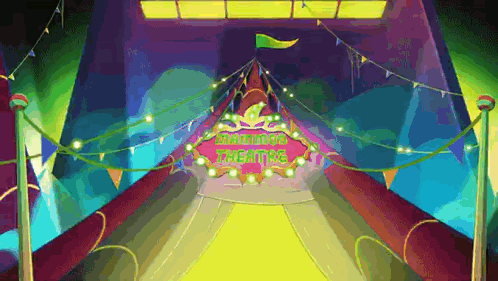
To this?
A brief history of Mammon
Addendum Because We Can't Have Nice Things: this essay is in no way meant to be a "critique", criticism, or personal attack against Helluva Boss/Hazbin Hotel/Vivziepop as I am, in fact, a big fan of all three! I actually loved the newest episode and Mammon as a character. Seeing him in motion, I think he looks damned near perfect as a modern take on the King of Greed. I wrote this ONLY for educational purposes.
Mammon is a Chaldee (the Semantic language of ancient Chaldeans, the people of a small Mesopotamian country who were later absorbed by the Babylonians) or Syriac word meaning "wealth" or "riches".

The Worship of Mammon, Evelyn De Morgan (1909)
He is best remembered from the Sermon on the Mount from Mathew 6: 24 (King James version): “No man can serve two masters: for either he will hate the one, and love the other; or else he will hold to the one, and despise the other. Ye cannot serve God and mammon.”
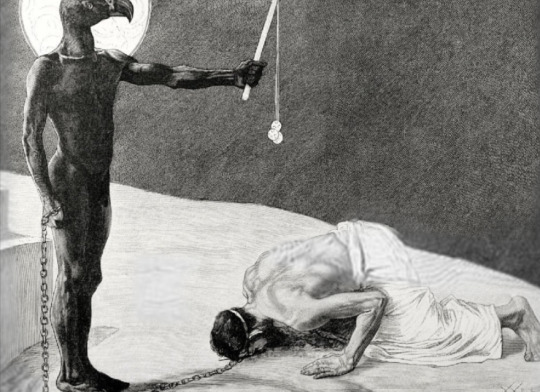
Some scholars believe Mammon might have been loosely based on Dīs Pater, originally a Roman God of mineral wealth and fertile lands who was later merged with the chthonic deities of the underworld Pluto and Orcus (because minerals come from underground). Pluto was depicted in the Divine Comedy as "wolflike demon of wealth"; wolves in the medieval times were symbols of greed. Others think he might have been an ancient Syrian god, though no trace of his cult or temples exists.

Mammon transformed over time from an abstract concept to major demon. This is thanks to later philosophers and theologians such as Saint Gregory of Nyssa, a third century Byzantine scholar, Archbishop of Constantinople John Chrysostom, and Peter Lombard, bishop of Paris from 1159 to 1160. His book of Four Books of Sentences (Sententiarum libri IV) was the standard theological text of the Middle Ages.
Mammon was assigned the sin of greed according to the Peter Binsfield classification of demons.
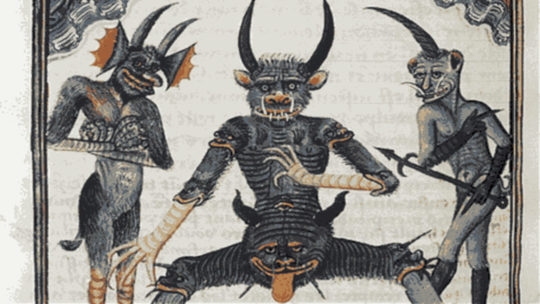
John Milton of Paradise Lost fame imaged him as a fallen angel. He is described as being stooped over (literally the "least erected" of Lucifer's demonic host) because he always has his eyes downward looking for gold and would rather use Hell's resources to finance his lavish lifestyle than wage war against Heaven.

In Edmund Spenser's 16th long poem, The Faerie Queene, Mammon is a “uncouth, salvage, and uncivile wight” who sets up his cave of riches right next to the entrance to the underworld. Subtle, huh? He tries to tempt Sir Guyon, the protagonist of Book II, with all his fabulous wealth, arguing that he could use it for good. (This is a religious-moral-political allegory about temperance, so you can guess how well that went.) He shows up again in Jacques de Plancy's Dictionnaire Infernal as Hell's ambassador to England. Yes, really.
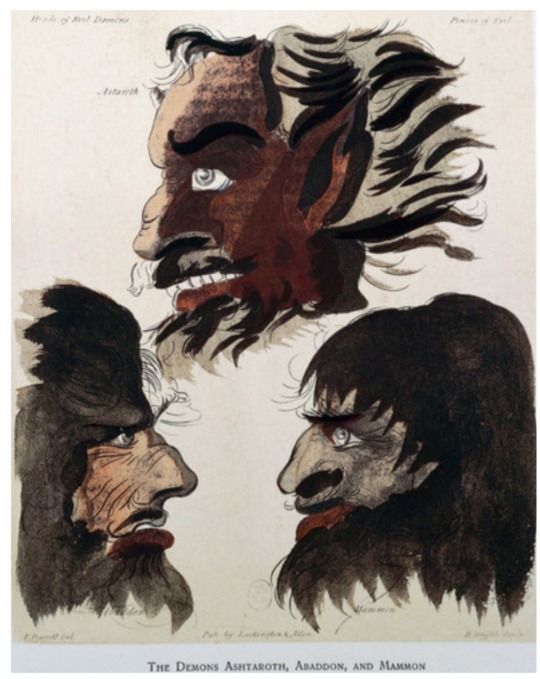
Just like in Biblical times, reformists used Mammon as a symbol of exploitation and unfettered capitalism during the industrial age.

Fun fact: Mr. Burns lives at the corner of Croesus and Mammon street.
So how does Vivziepop's version compare to the historical Mammon? I dunno, he hasn't appeared in the show yet. It's not my favorite design, but I like the fact that half the fandom was expecting him to be the Big Bad of Helluva Boss, and he's a just big heckin' chonk who sort of looks like a demented Dr. Suess character crossed with a demonic air freshener. It's a silly design for a silly dude, but he could be more dangerous than he looks...
81 notes
·
View notes
Text
palestinian poets: lena khalaf tuffaha
lena khalaf tuffaha is a poet, essayist, and translator and a first-generation american, immigrant, and expatriate of palestinian, jordanian, and syrian heritage. she is the author of two poetry chapbooks and three books of poetry: arab in newsland (two sylvias press, 2017); water & salt (red hen press, 2017), winner of the 2018 washington state book award for poetry; letters from the interior (diode editions, 2019); kaan and her sisters (trio house press, july 2023); and something about living, winner of the 2022 akron prize for poetry, forthcoming from university of akron press, 2024.
tuffaha also co-curated the collection poems from palestine at the baffler alongside fady joudah, and translated many of the pieces.
IF YOU READ JUST ONE POEM BY LENA KHALAF TUFFAHA, MAKE IT THIS ONE
you can read more about how this poem came to be, and also listen to it read aloud by numerous people.
OTHER POEMS ONLINE I LOVE BY LENA KHALAF TUFFAHA
In Case of Emergency at literary hub
Fragment at kuow (also read aloud)
Mountain, Stone at ours poetica (read aloud with subtitles)
Letter to June Jordan in September at the nation
Lullaby at poetry society of america, with reflections on the piece by naomi shihab nye
Dhayaa at sukoon
Beit Anya at poetry daily
Ruin at lunch ticket
Kaan Loves the Insomniac | كان النوم عميقا at diode
Lesson: Nymphaeum at the adroit journal (also read aloud)
Miss Sahar Listens to Fairuz Sing "The Bees' Path" at greensboro review
65 notes
·
View notes
Text
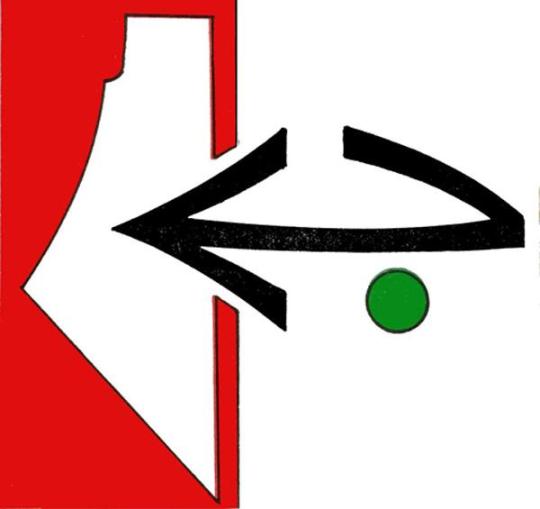
Origins of the PFLP Logo (source)
Analysis / Interpretation / Press
The Origins of the PFLP Logo
Berut, Lebanon - 1969
Vladimir Tamari - August 2016, Tokyo [speaking in the following text]
Following the overwhelming Arab defeat and the total occupation of Palestine, including Jerusalem in the Arab-Israeli War of June 1967, the Palestinians countered with a guerrilla war - the Resistance. I was in Beirut at the time, cut off from home and family, and working for UNRWA the United Nations Agency to support Palestinian refugees in the audio visual section. When our film group went to the Jordan river to film the stream of Palestinian refugees fleeing the war, I tried entering Palestine. I said "Salam" (Peace) to the lone Israeli soldier posted there on the bridge. He replied smiling "Shalom" but with his gun prevented my return to Jerusalem, my birthplace, and to Ramallah my home. Later in Beirut I worked in the UNRWA-UNESCO Institute of Education as an illustrator.
One day in early 1969 my friend X (who prefers anonymity) and I were wondering why the Resistance did not have an effective logo or symbol so we started designing one. This was a personal initiative as neither of us was or became members of any of the organizations carrying on the fight against the Israeli occupation of our beloved homeland. We sketched and played with various ideas – using the Arabic letter Fa for Falastin (Palestine), adding an arrow to the word Fath - Yasser Arafat's group, and finally adding a map of Palestine. The Fa + arrow + map made a simple dynamic symbol and I felt it was good enough to finalize and send to the PLO (Palestine Liberation Organization) as a logo suggestion. I have no idea if my covering letter and designs ever reached the poet Kamal Nasir, the spokesman of the PLO, or whether some committee there rejected a change (they already had a bureaucratic-looking logo designed by my friend the Palestinian painter Ismail Shammout. The military wing of the PLO had its own symbol, designed by the Syrian painter Nazir Nab'aa.)
Meanwhile as a graphic designer and typographer I was helping the Jordanian sculptor and poetess Mona Saudi produce her book In Time of War Children Testify of drawings and anecdotes by Palestinian refugee children from Baq'aa refugee camp in Jordan (Published in 1970 in Beirut jointly by the PFLP and Mawaqif, the journal of the Syrian poet Adonis, which Mona co-edited). I scripted the entire text of the book by hand using an early version of my AlQuds font. Mona had contacts with the PFLP, and had the idea to change the Fa of the logo to the Arabic letter Jeem for Jabha (Arabic: front). This I implemented using the distinctive curved letter jeem from AlQuds. Mona took the logo suggestion to Ghassan Kanafani, the spokesman for the PFLP. Kanafani, the famed Palestinian novelist, was also a gifted amateur artist and he immediately understood the impact of the symbol and had it adopted by the group, after changing the square format to a circle. People in the movement liked the logo and as the years and decades passed it appeared in all sorts of posters, flags, wall graffiti everywhere in and outside Palestine.
Needless to say, my having designed the logo did not mean I condoned what I soon felt were some serious mistakes made in the name of Palestine, such as the targeting of innocent civilians. In a spirit of disillusionment I left Beirut for good, and emigrated to Japan where I limited my activities for Palestine to designing posters, giving talks, and the like, devoting myself to my art and inventions. I had met both Kamal Nasir (the cousin of my brother-in-law) and Ghassan Kanafani. Once in Ramallah Kamal with his wonderful spirit, urged me to follow my dreams whatever the cost. Both he and Ghassan were assassinated by Israeli agents in Beirut, in 1972 and 1973 respectively. Their political work ended with their deaths, but their great novels and poems live on as a treasured part of the Palestinian cultural heritage. In 1976 my father obtained a permit to allow me and my family to visit him my mother and sisters in Ramallah then under Israeli occupation. On the bridge on the Jordan River I was arrested by the Israelis and detained in Jerualem for three days, where I was questioned about my above-mentioned activities then released. After three months I was not allowed to renew the permit to be in my own homeland and had to return to Tokyo.
The Arabic word Fath (Palestine Liberation Movement) with the arrow I designed. Feb 1969
X abbreviated the Fath to an 'F' with an Arrow, adding in Arabic "Towards Victory Always - Long Live Palestine!"
My drawing of the Fa + arrow March 1969
Brainstorming with X - the map is added. February 1969
The Fath logo sketch. Apri-May 1969
An early sketch of the PFLP symbol. May 1969
The final PFLP logo in outline. May 1969.
Printer's proof of the logo. Nov. 1969
Ghassan Kanafani, spokesman of the PFLP in his Beirut office around 1970 just as I remembered him. I went there on business related to the Palestinian refugee children's drawings book In Time of War, Children Testify. The finalized symbol is pinned on a map pf Palestine. To the left is the circular version which became the standard.
In 1970 I was asked to design this medallion or key-holder. 36 mm diameter.
A news item from AlHadaf the official PFLP magazine edited by Ghassan Kanafani. November 1969. "A NEW SYMBOL FOR THE POPULAR FRONT. The new symbol for the Popular Front of the Liberation of Palestine, as it appeared recently in a number of places. It consists of the letter 'J' ending with an arrow thrust forward, towards Palestine."
ABOUT HALF A CENTURY LATER, IN PALESTINE:
Now, 47 years after designing the PFLP symbol, the enthusiasm and wrath of those years is a distant memory. Nevertheless, the symbol itself is still very much in use as I discovered via a simple Internet search. The logo helps keep alive the spirit and hope of liberation, reminding us of the necessity of regaining our own homeland. It is still used at rallies attended by thousands, waved at funerals of those who have given up their lives to the cause - often as a result of mistreatment or hunger strikes in Israeli jails, and scrawled on the Separation Wall eating up our beloved Palestine from the inside.
Palestinian girls attend a Popular Front rally in Gaza in 2015. Note how they added a ^ mark to the symbol, for the letter Sheen in Shaabiyya- Popular. Right, the official symbol as it is distributed digitally from the group's website. My original outline of the logo have become slightly distorted, for example the horizontal line lost its subtle curvature.
A poster announcing the martyrdom of university student Saji Darwish shot by Israeli troops near Ramallah in Palestine in 2014 after a rock-throwing incident.
Saji's funeral procession.


28 notes
·
View notes